Earrings have come a long way, reaching our days and becoming an inseparable part of fashion. Over time, their meaning, shape, style, size, and material have changed — and today, they are among our favorite accessories. But how did these little circles manage to withstand all the shifts in fashion?
17.05.2025
THE EVOLUTION OF THE EARRING
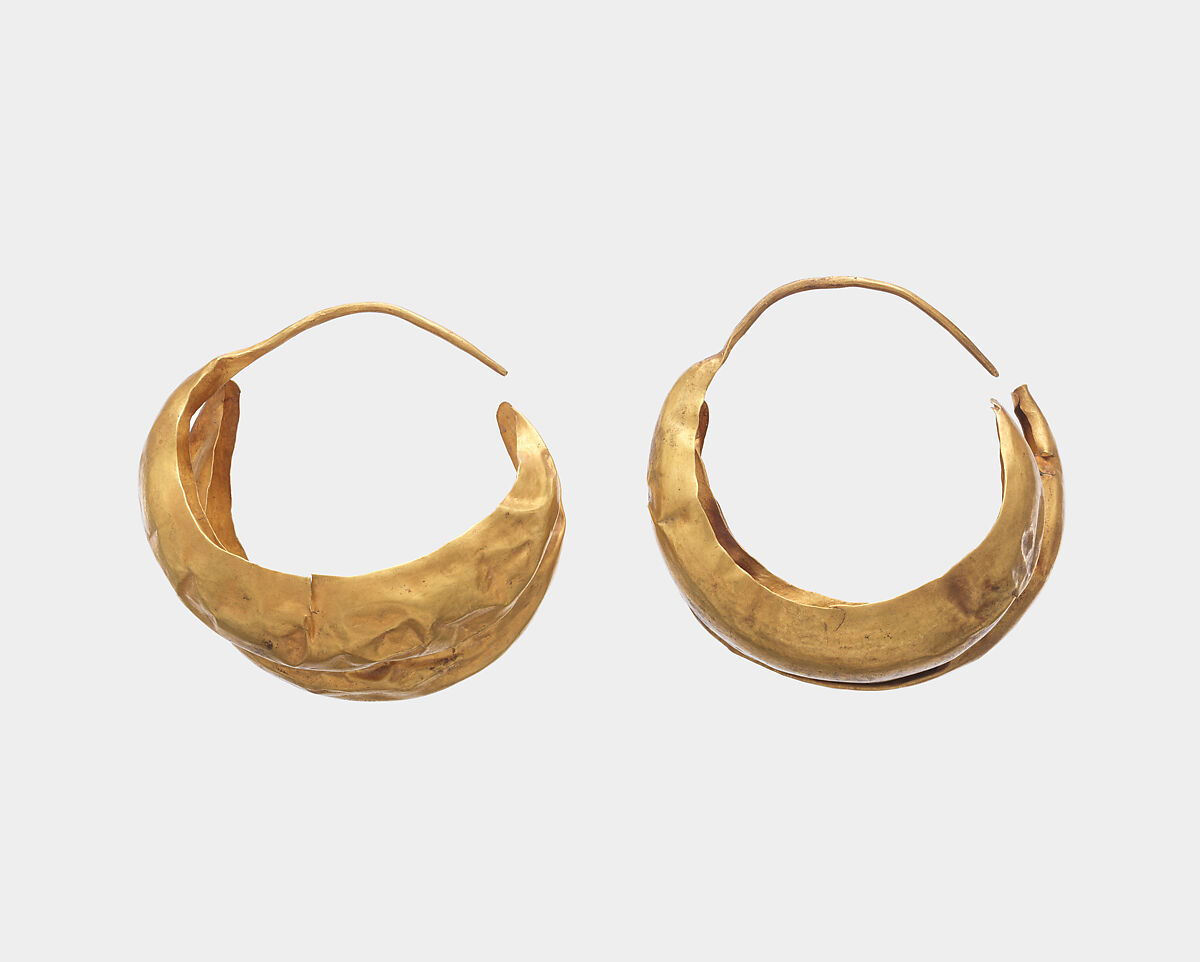
THE ORIGINS OF EARRING HISTORY
Earrings have a rich and centuries-old history. One of the oldest pieces of evidence is Ötzi — the mummy who lived around 5,300 years ago. When he was discovered and studied, researchers found rather large holes in his earlobes. Yes — even Ötzi wore earrings!
The earliest archaeological findings take us back to 2900–2350 BC, where hoop or crescent-shaped earrings were trending among the Sumerians. The distinguished Sumerians would probably be delighted to know that, in the 21st century, those same shapes are fashionable once again. The difference is that, for the Sumerians, earrings weren’t just decorative — they were symbols of social status. The Sumerian earrings on display at the Metropolitan Museum are similar to those found in royal tombs, crafted from thin sheets of gold and shaped like delicate crescents.
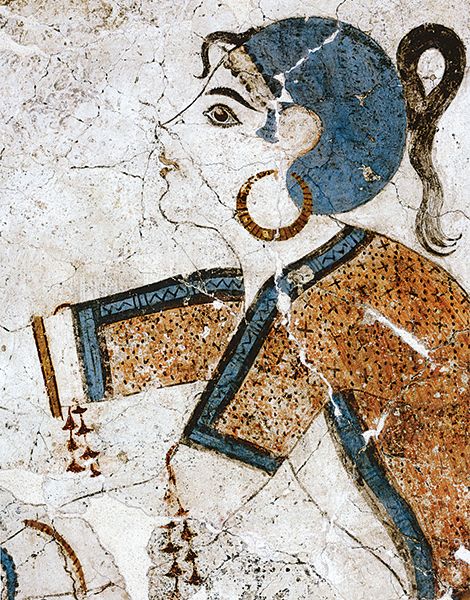
EARRINGS IN ANCIENT EGYPT AND GREECE
In 1923, when the mummified body of Tutankhamun was discovered, researchers also noticed his pierced ears. What’s more, earrings were found in his tomb — likely symbolizing his high status and connection to the gods.
This type of earring was especially popular in Ancient Egypt around 1500 BC. Egyptians attributed extraordinary meaning to gold, believing it represented the very flesh of their gods and carried the warmth and light of the sun.
Circular earrings, in turn, symbolized the cycles and rhythms of life and nature — as well as power and wealth. One of the most fascinating facts is that earrings were worn not only by men and women, but also by… cats. Since cats were considered sacred, adorning them with jewelry was another way to emphasize their elevated status.
For the Ancient Greeks as well, golden hoops were seen as sacred objects, bringing the wearer closer to the gods. The famous wall paintings on the island of Santorini, depicting figures wearing earrings, prove just how beloved and fashionable these accessories were in Ancient Greece.
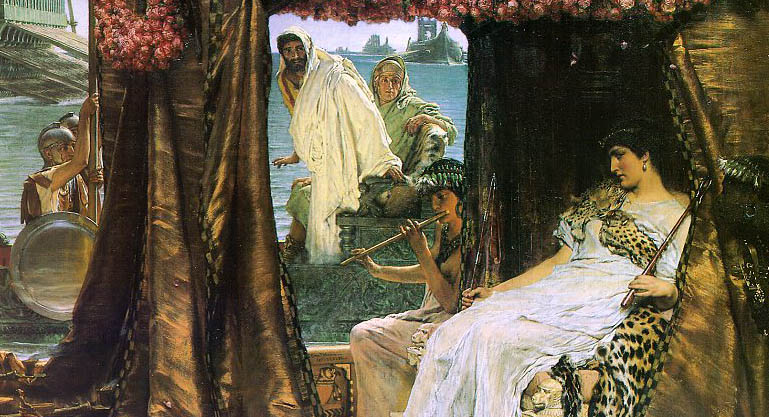
EARRINGS IN THE ROMAN ERA
During the Roman aristocracy of the 1st century AD, heavy gold jewelry was considered the height of fashion. Women, in particular, wore gold earrings adorned with pearls.
Earrings discovered in Pompeii — decorated with uncut emeralds and pearls arranged like grape clusters — are true reflections of the era’s opulence.
The Roman philosopher Seneca once complained: “I see that fastening a single large pearl to each ear is no longer enough.” Cleopatra herself owned pearl earrings that were considered the most valuable jewelry in the world. According to legend, she dissolved one of those pearls in vinegar and drank it — to prove to her beloved Mark Antony that her wealth knew no bounds.
After Cleopatra’s death, the second pearl was said to have been split in two and hung from the ears of the statue of Venus in the Roman Pantheon.
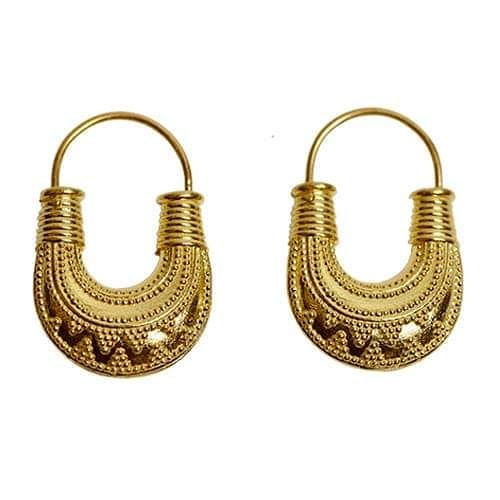
VEARRINGS IN ARMENIA
This same style of earrings was also widespread in Armenia. The History Museum of Armenia holds a collection of crescent-shaped gold earrings dating back to the 8th–7th centuries BC, discovered in Karmir Blur. These ornaments show that even in ancient times, Armenian men and women wore earrings as expressions of social status, religious affiliation, and aesthetic preference.
During the Middle Ages, earrings were gradually replaced by rings, necklaces, brooches, and pendants. This shift was partly due to the era’s characteristic large headdresses and elaborate hairstyles, which often covered the ears.
Moreover, in the 13th century, the Church banned ear piercing, deeming it unacceptable. As a result, for a time, earrings were worn mainly by thieves or members of the lower classes, which significantly reduced their popularity.
Interestingly, the Church seemed to overlook the multiple mentions of earrings in the Bible. For instance, Ezekiel 16:1 reads: "I put a ring on your nose, earrings on your ears, and a beautiful crown on your head." These earrings were symbols of God's blessing.

THE REVIVAL OF EARRINGS AND FASHION TRANSFORMATIONS
This period marked a turning point, as earrings moved beyond purely social or cultural contexts and began to be seen as a form of personal style expression. The accessory also regained popularity among men — we all recall the famous portrait of William Shakespeare wearing an earring.
Earrings made a triumphant return during the Renaissance. Changes in hairstyles at the time led to the growing popularity of smaller earrings. Women of the upper class once again began adorning their ears, and pearls became the ultimate fashion statement — symbolizing luxury and high social standing. Johannes Vermeer’s famous painting, Girl with a Pearl Earring, perfectly captures the spirit of the era, highlighting the girl’s delicacy and innocence.
In the Victorian era, earrings once again fell into the background — largely due to fashionable hairstyles that covered the ears, rendering jewelry nearly invisible.
However, in the 1860s, earrings — especially drop styles — made a strong comeback. Queen Victoria frequently wore large pendant earrings adorned with precious stones. Her taste had a significant influence on fashion trends of the time — not only in the United Kingdom but throughout Europe as well.

THE 20TH CENTURY
In the 20th century, earrings became a staple of fashion — accessible for every taste, budget, and occasion. It’s hard to pinpoint which brand was the very first to launch a dedicated earring collection, given the centuries-old tradition of jewelry making.
Founded in 1837, Tiffany & Co. was among the first to play a major role in shaping the world of luxury jewelry, becoming a symbol of American elegance. In 1862, U.S. President Abraham Lincoln made a remarkable gesture by purchasing a pearl necklace and matching earrings from Tiffany & Co. for his wife. Mary Todd Lincoln wore the exquisite set to the presidential inaugural ball — a historic moment that cemented Tiffany’s reputation in the realm of high fashion.
Nevertheless, some of the oldest and most prestigious brands, such as Cartier and Tiffany & Co., have produced exceptional earring collections for generations, becoming enduring emblems of luxury. Founded in 1847, Cartier quickly rose to prominence as a symbol of elegance and royal opulence. Princess Mathilde, sister of Napoleon III, was the first to purchase Cartier jewelry — paving the way for the brand’s grand legacy with a touch of regal charm.
Van Cleef & Arpels, established in 1896 in Paris, became renowned for its exceptional craftsmanship and innovative use of precious stones. Over the years, the brand has become a true icon of luxury, style, and refinement. Their signature Alhambra earrings, introduced in 1968, have since become timeless classics. Just last year, these earrings ranked among the top 5 trendiest accessories worldwide.
In the first half of the 20th century, Louis Cartier created the Trinity collection, which remains one of Cartier’s most iconic jewelry lines to this day. The three interlocking bands of white, yellow, and rose gold symbolize friendship, love, and loyalty.
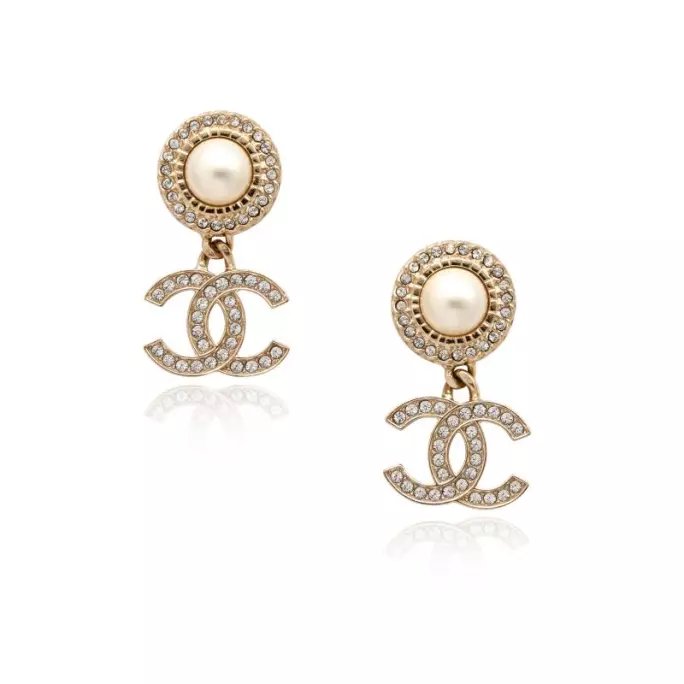
CHANEL,CARTIER, BULGARI
In the 1920s, Coco Chanel decided to revolutionize the world of jewelry by introducing accessories accessible to the wider public. She broke the idea that luxury should be limited only to precious stones and metals.
Among the enthusiasts of Cartier earrings, Catherine, Duchess of Cambridge (Kate Middleton) holds a special place. She is often seen publicly wearing this brand’s elegant jewelry. On one occasion, Kate wore Queen Elizabeth II’s favorite pearl earrings — created in 1929 as a unique wedding gift from the Queen’s parents.
Bulgari, founded in 1884 in Rome, became a global symbol of luxury and bold design. The brand is known for its colorful and expressive style, always distinguished by its daring elegance. Their Serpenti Viper earrings, featuring the motif of a coiled serpent, are a vivid testament to Bulgari’s innovative and bold approach. Originally designed in 1948, the snake design has become a classic over time. Incidentally, in the Year of the Snake, these earrings are especially trendy — symbolizing rebirth, vitality, and strength.
In the second half of the 20th century, the world of earrings witnessed a true cultural explosion. Earrings became a powerful means of self-expression, reflecting the wearer’s personality, musical preferences, and social stance.
In the 1970s, punk rock and pop art movements radically changed the role of earrings in fashion. The rebellious style was expressed through safety pins, studs, chains, and oversized earrings, which became bold symbols of resistance against social norms. These pieces spoke of freedom, individuality, and challenging societal stereotypes.

ROCK AND HEAVY METAL
Rock and heavy metal also played a key role in the evolution of earrings, becoming a bold platform for self-expression. Artists from these genres continuously pushed boundaries by choosing earrings that often reflected the powerful and uncompromising spirit of their music. Legendary members of Led Zeppelin and Kiss made large hoop earrings, crosses, stars, and other daring designs fashionable. These accessories became an inseparable part of rock stars’ images, emphasizing their unique, rebellious approach to life.
Interestingly, this means of self-expression remains relevant today in both rock and pop music scenes. Modern stars frequently complement their stage or everyday looks with earrings, turning them into signature brand details.
In the 1990s and 2000s, hip-hop culture brought a fresh wave to earring fashion. Rappers and hip-hop artists began combining large gold chains and rings with earrings that became vivid symbols of identity, status, and belonging to the hip-hop community.
Diamond earrings, in particular, quickly became an essential part of hip-hop stars’ images — signaling not only their taste but also their financial success. This fashion wave spread to other fields like fashion and pop culture, cementing earrings as a powerful tool for bold self-expression.
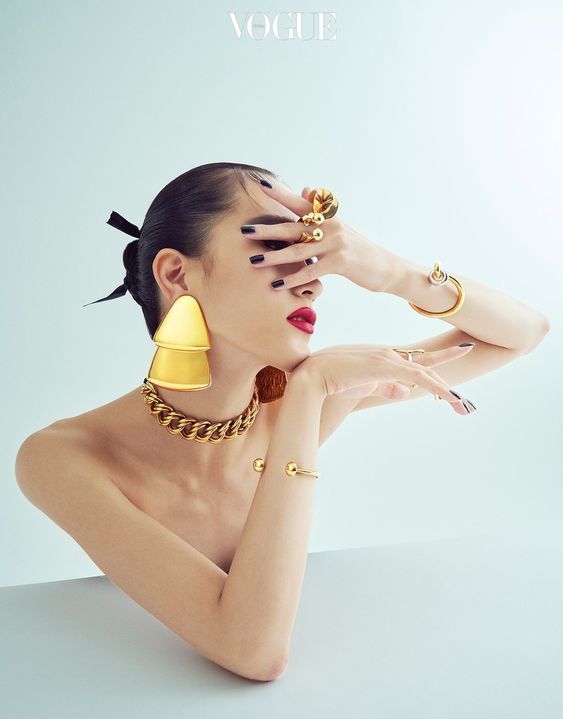
CONTEMPORARY EARRING TRENDS
Various cultures, subcultures, and movements have contributed to the limitless diversity and innovation in earring design — creating expressive and unique styles that continue to inspire designers today.
Just last year, even the most fashion-averse couldn’t miss Bottega Veneta’s teardrop earrings, which literally captivated fashion lovers worldwide. Hailey Bieber, Kendall Jenner, Kylie Jenner, and Rosie Huntington-Whiteley seemed to become the official ambassadors of this trend, showcasing the simple yet luxurious elegance of teardrop earrings.
On Bottega Veneta’s official website, these earrings are listed as “Small Drop Earrings” (priced at $880) and “Large Drop Earrings” (priced at $1,350). These earrings went so viral that their popularity quickly spread to all corners of the fashion world, inspiring more affordable alternatives. Replicas became available from Primark to Wildberries, making this accessory accessible to almost everyone.
As mentioned earlier, hoop earrings continue to dominate the fashion scene in 2025. If you recall Jennifer Lopez’s iconic large hoop earrings, which became inseparable from her style back in 2003, know that this trend has returned with full force.
But wait — before Jennifer, let’s not forget that legendary Shaden truly popularized hoop earrings with her distinctive style and presence. Thus, hoop earrings have rolled from the past into the future of fashion, continuing to capture the hearts of fashion lovers across all times and generations.
Earrings without piercings , or cuffs, will remain trendy and beloved in the fashion world this year as well. They suit everyone, regardless of gender or age — from bold to delicate, silver or gold, chunky or elegant — making a unique addition to any look.
Almost all celebrities can already be seen wearing hoops, no matter the style or occasion.
This year, colorful gemstone earrings, geometric shapes, and long dangling earrings will also be in vogue — reminding us that the new is often just a well-forgotten old.
But what’s most important?
Earrings are our story and memory — a reflection of our style, identity, personality, and past. Earrings are an expression of our uniqueness, a declaration of our choices and courage, inherited circles that connect us to a new and unknown future.